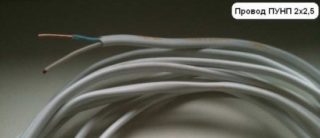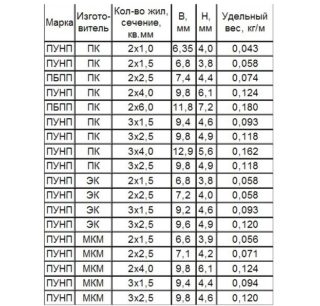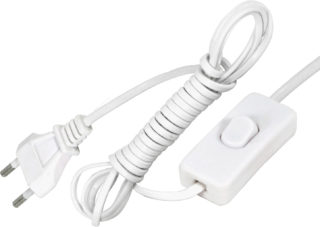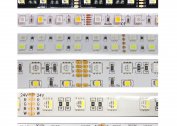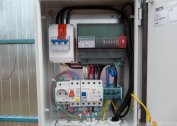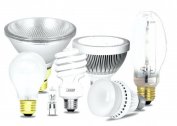The PUNP wire, widely used at one time, is a well-known in the past electrical product belonging to a special class and intended mainly for domestic needs. Its direct purpose is to serve as the basis for the manufacture of power cords in lighting fixtures and in other household consumers. Today it is considered an obsolete cable product and is not recommended for practical use. Despite this, the PUNP brand is appreciated by most experts and attracts them with its ease of installation and comparative low cost.
Decoding and marking
The interpretation and application of the PUNP wire is inextricably linked, since it can only be used after its purpose is understood. To decipher the designation of this product, it is enough to familiarize yourself with the following information:
“P” - “conductor”;
"UN" is a universal sample;
she is also the letter "P" means a flat type.
The “universality” of PUNP is considered a relative concept, since it is suitable only for solving a narrow range of everyday tasks.
Digital and color markings are classic, consistent with the generally accepted standard. The protective conductor is located in the coating of the yellow-green color, and the zero core is in blue insulation. In this case, the phase bus usually has a white or brown color. The outer layer of the shell of the PUNP wire with the designation applied on it has a non-standard white color.
Design features and selection rules
In its internal arrangement, this cable belongs to products that are traditionally called flat, since the conductors inside the sheath are laid in one line. The conductors themselves at PUNP are copper and consist of several thin wires.
Violations of the standard, often observed in the last century, were manifested in the fact that some manufacturers had only one wire inside the core. The consequence of this is its high resistance, leading to the release of a large amount of heat. Before buying a cable, you need to carefully examine its slice and make sure that the inside is composed of several wires.
Each of two or 3 working cores is protected by a separate PVC sheath, while the overall outer coating is made of the same material. They do not differ in high strength indicators and sometimes are damaged already at the sales stage. When purchasing PUNP, this is also paid attention to.
In order to prevent irreparable mistakes when purchasing PUNP, the release date is mandatory checked, which is often overdue. It is best to immediately refuse such a sample, since the expiration date declared by the manufacturer of 30 years most often does not correspond to reality. There is its analogue, designated as APUNP, made of aluminum. In practice, it is found only in very old houses with decrepit wiring.
In the open sale, this modification is not found, because its characteristics do not meet the requirements of modern standards.
The features of the device PUNP also include a limited selection of the number and cross-section of conductors. The number of individual cores is no more than 3, and their cross sections correspond to a range of values from 1.5 to 6 mm square.
Characteristics and scope
Before using the product, it is important to familiarize yourself with its technical characteristics:
- The maximum withstand voltage is 250 volts.
- The frequency of the current is 50 Hz.
- The range of permissible temperatures is from -15 to +50 degrees.
- The maximum temperature of the surface heating of the coating is up to 70 degrees.
- Guaranteed service life - up to 30 years.
From the above list it follows that this type of product cannot be attributed to universal products even with a great desire. The PUNP wire can be used in a limited range of temperatures and voltages, which is suitable only for single-phase household networks. In the 90s of the last century, the scope of its use was limited to the installation of sockets and lighting devices, no more. It was allowed to lay it only in cable channels or in pipes of the "corrugation" type. This is because PUNP completely lacks any protection, and its flexibility and softness only increase the likelihood of mechanical damage. That is why the areas in which this product can be applied are very limited.
Reasons for refusing PUNP
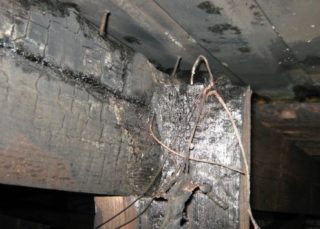
At one time, it turned out that this wire was manufactured according to the very "dubious" TU 16.K13-020-93 and at the moment does not meet modern requirements. In addition, as a part of the plastic compound of the sheath, no additives were provided that protect the wire from dangerous factors. Today, this GOST is canceled as not complying with modern standards.
Inadmissibility of use is clearly demonstrated by the example of the regulation on the cross section, the deviation of which from the norm according to the old technical specifications was allowed within 30%. In reality, this meant that the 2.5 mm wire used when laying in the wall actually had a cross section of 1.7 mm. When any energy-intensive consumer is connected to the outlet connected to it, such a cord could not withstand the load, overheated, and the shell melted.
In addition, manufacturers often underestimated the thickness of the protective shell, the value of which was already not large enough (only 0.4 mm). This drawback sharply reduced the electrical safety and reliability of the wire.
Despite the many disadvantages, PUNP is still in demand among users. This is explained by the fact that it is cheaper, easier and much more flexible when compared with VVG.
When allowed to use
When carrying out installation operations, if possible, other types of cable are selected, which are the closest analogues of PUNP (VVG or PVA, for example). But if they were not found, you will have to be content with what you have by taking pre-defined precautions. For this, the diameter of the cores is first measured with a caliper. Then the formula is used to calculate the cross-section of the PUNP, according to which the square of the value obtained after the measurement is multiplied by a factor of 0.785.
Depending on the result, a decision is made on specific places where it is allowed to be used. Usually, it is assumed that the calculated cross-section of 2.5 mm corresponds to the real 1.5 mm square. Such a cable can be used in the following situations:
- as a power cord for floor lamps or table lamps (its standard length is 1.5 meters);
- to connect TVs or not very energy-intensive computers to the network;
- for the manufacture of garlands based on LEDs.
In no case should you connect any heating devices using the PUNP. Powerful appliances, such as energy-intensive stoves and panels, as well as microwaves, toasters and kettles, are excluded. In addition, when operating this cable, it is not allowed to simultaneously connect several devices to the network at once. If you transfer these load cases to the current equivalent along the cable cores, a maximum current of up to 2 amperes can flow.
Verification Methods
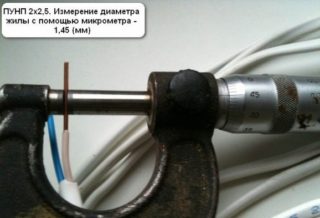 Before choosing the right sample, PUNP must be checked for compliance with the parameters stated in the passport.To do this, you need to do the following operations
Before choosing the right sample, PUNP must be checked for compliance with the parameters stated in the passport.To do this, you need to do the following operations
- Measure the cross section of its cores and the thickness of the insulation.
- Determine the resistance of copper conductors.
- Check it for mechanical strength.
To check the first of these parameters, you need a caliper, and to measure resistance, you will need an electrical meter - a multimeter included in the Ohms mode. For testing, a cable length of one meter is taken, and then the tester measures its resistance in Ohms. It should not be more than the standard specified in the tables for samples of cable products. To test it for durability at home, you need to pull the test piece by the ends and then check how much its insulation is stretched and if one of the cores is broken.
The PUNP wire should be used only in exceptional cases, when its substitute was not at hand. But even with this approach, you will first need to take special measures to use it with minimal risk.
